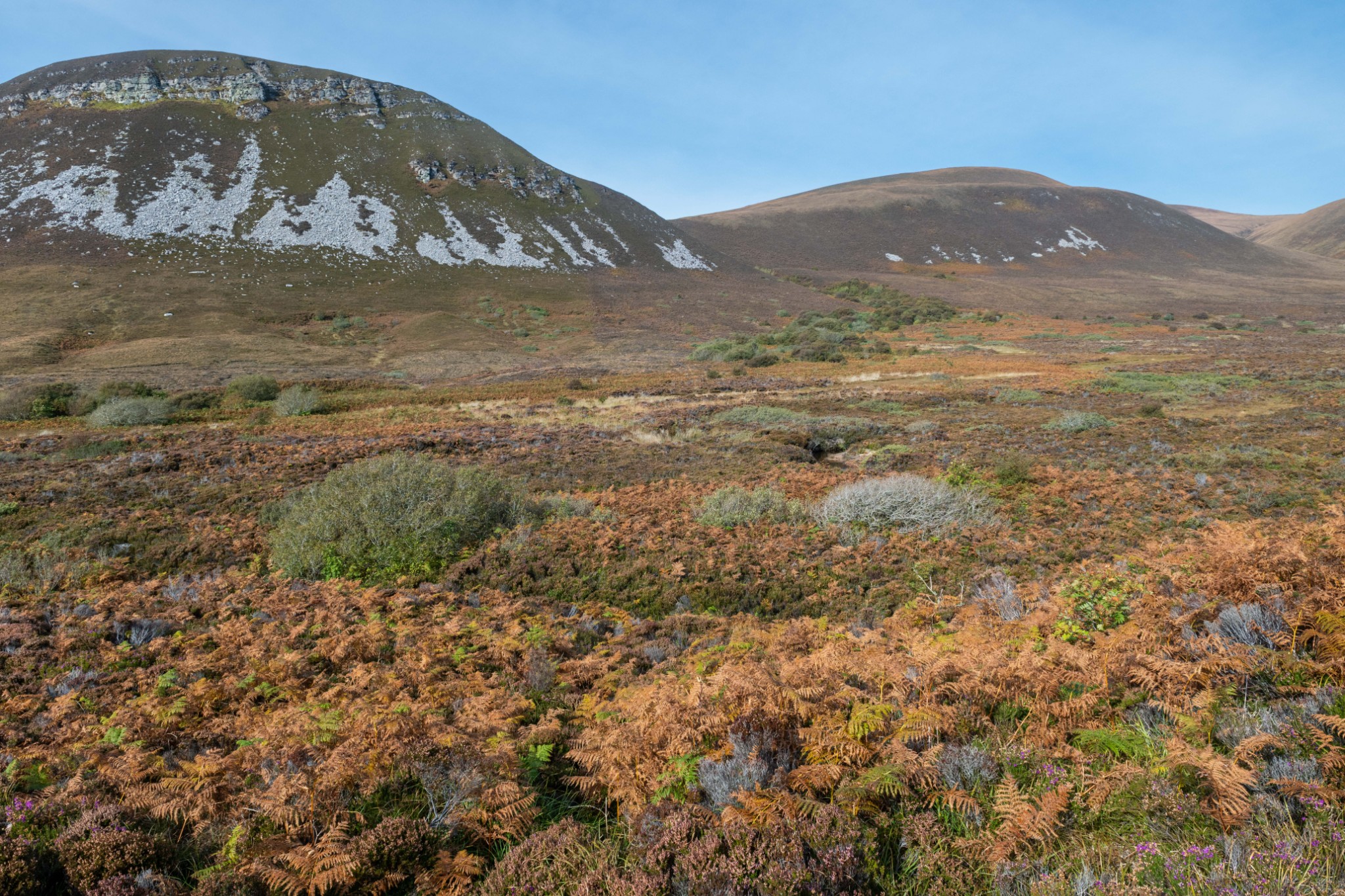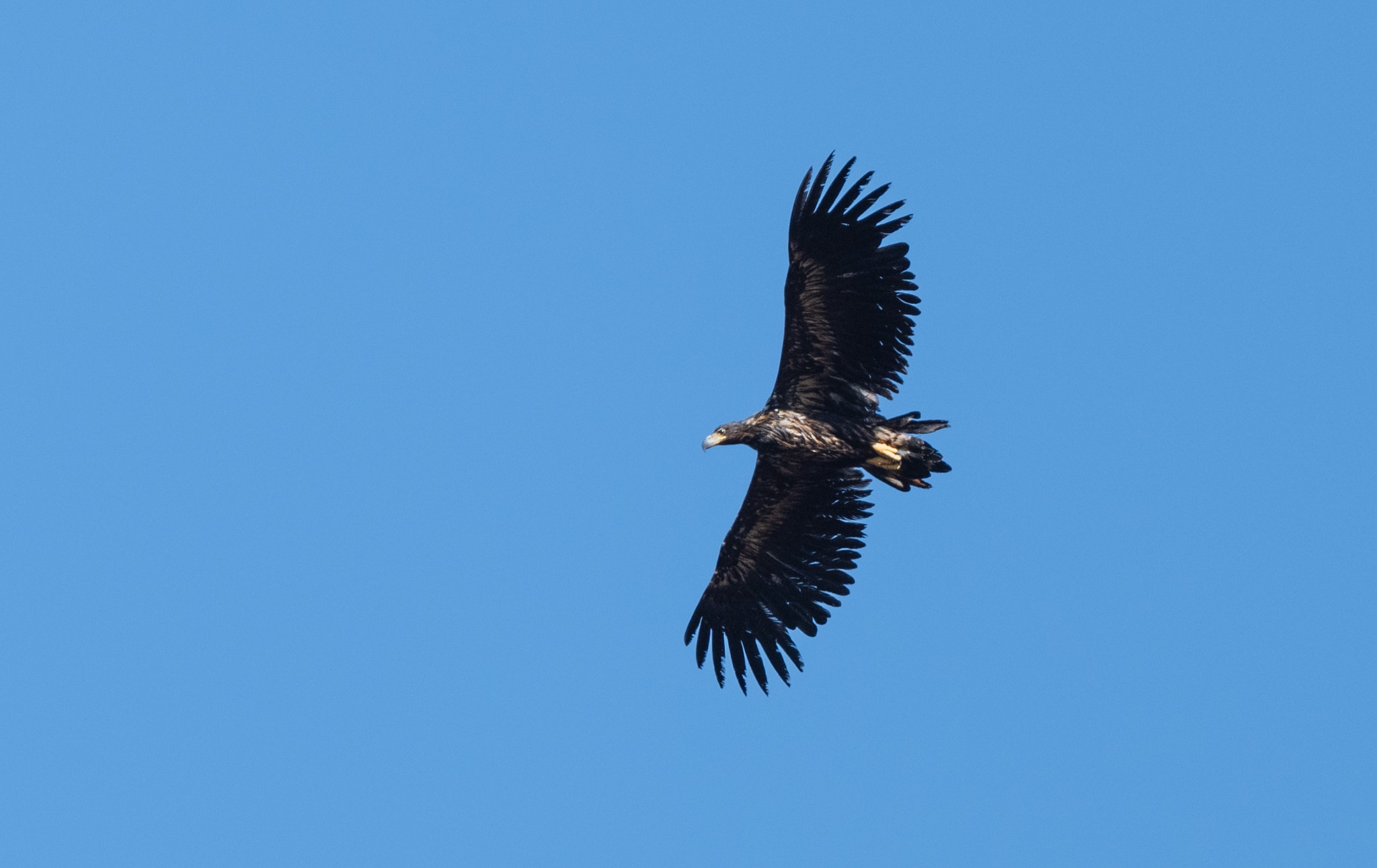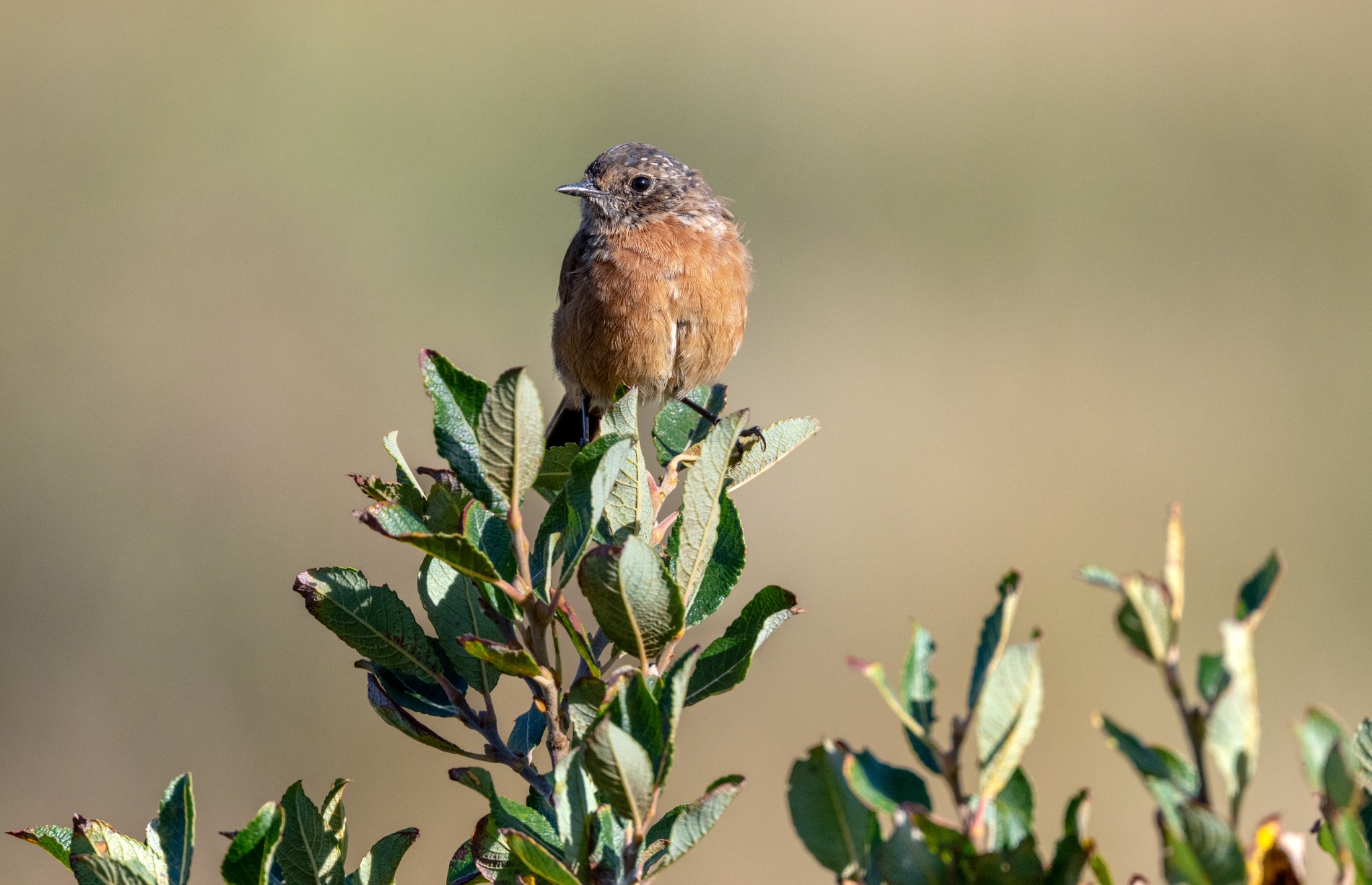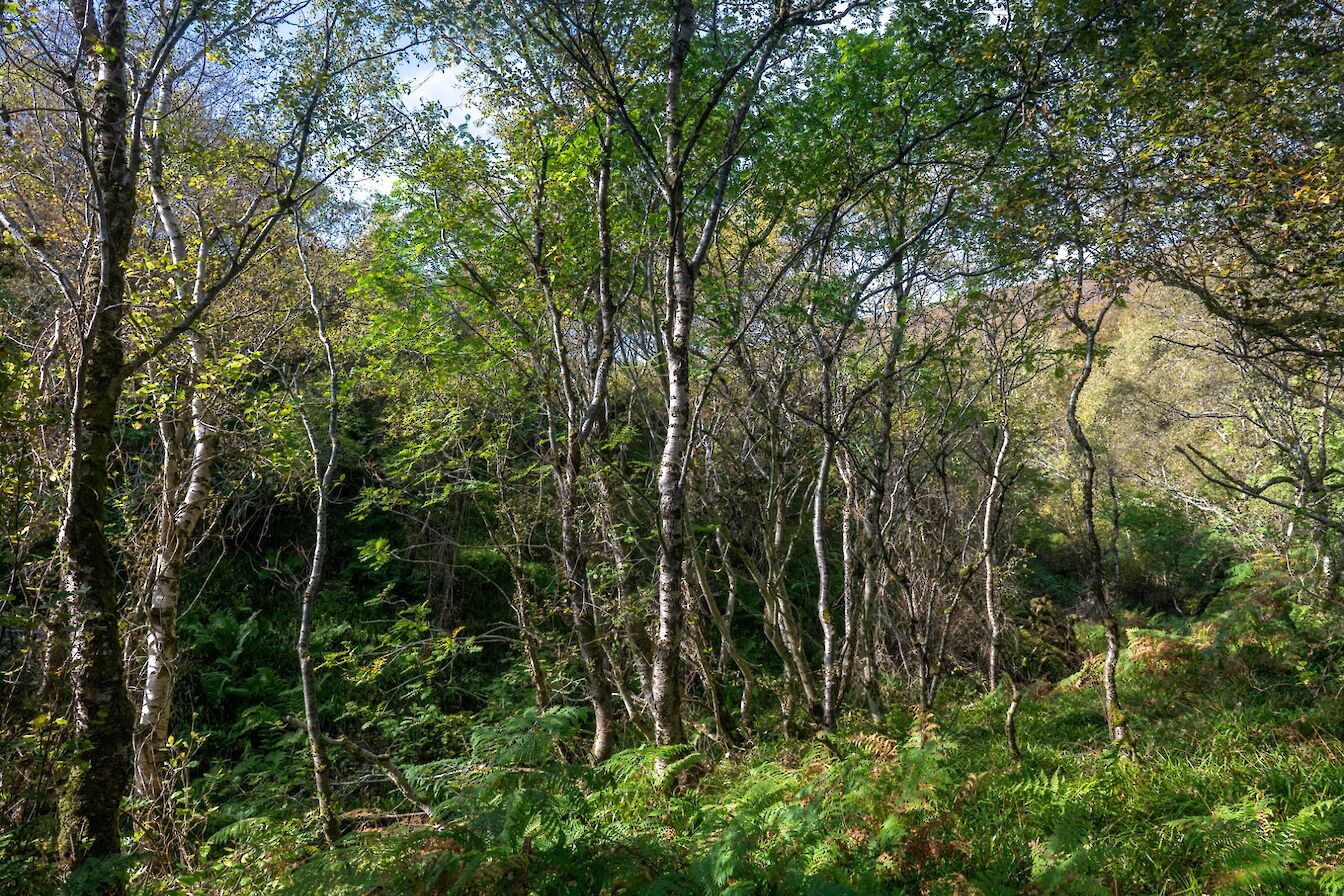The arrival of autumn in Orkney is less well defined than other parts of the country, but arrive it does.
I think our perception of what autumn should look like is influenced by that most obvious of signs, when the leaves of trees turn brown. With the predominance of agriculture here where one field often looks much like another it’s easy to feel that summer just slides slowly into winter.
There is however an island where the signs are clear and where it’s easy to see the beautiful palette of colours that we associate with autumn - warm rusts, yellows, and vibrant reds.
That island is Hoy and I’m going to walk through the valley at the Ford of Hoy, following the Rackwick burn before heading into a secret gully and the home of most northerly natural woodland in the UK in order to see these colours in a natural setting.
As I drive in the valley between the Nowt Bield and the Dwarfie Hamars I keep an eye on either ridge as this is the island of eagles.
Veering west towards Rackwick I can’t believe my luck; a huge bird is slowly gliding along Broadi Face in front of me. There’s no mistaking what this is, a white-tailed eagle. As if to impose its dominance in the landscape it deals with the presence of a great skua who momentarily takes umbrage at the eagle’s appearance by simply flipping on its back, showing its talons and letting out a yelp. The skua itself is a big bird but is dwarfed by comparison.
As I watch the eagle gain height, I can see that it is something of a scruffy individual as many young white-tailed eagles are. This bird is sporting old and new feathers, undergoing its first moult out of juvenile plumage, making it a year or so old.
I lose it behind the ridge and carry on along the road where I can sort out my camera gear and start heading off on foot towards the wood.
Choosing how much kit to take as well as enough food and water for the day is always a bit of a compromise, but to cover each subject I hope to take pictures of I take my 800mm, 24-70mm, and 105mm macro lens and sling the not-unsubstantial weight on my back. Conditions couldn’t be any better, it’s around 15C with light winds and just a few high clouds.
The going is easy as I make my way along the path heading to Moaness. I walk for around 10 minutes but know at some point soon I’m going to have to leave the track and head into the moorland if I want to reach the woodland. I can see it up ahead underneath the imposing face of Grut Fea. Before I veer off the path I see the most beautiful rowan tree, its distinctive leaves bright red, some still green and in the process of going yellow.
It’s worth thinking about what’s going on here and delving deeper into the process that ‘causes’ the colour change. The leaves on this rowan are turning yellow, then red because they have stopped producing chlorophyll. Chlorophyll is the green pigment in leaves that allows for photosynthesis, the process of converting light into energy for the tree. Chlorophyll masks the other yellow and orange pigments that are also present in the leaves, but cooler temperatures and reduced daylight signal the tree to reduce photosynthesis and begin preparing for winter.
As the chlorophyll breaks down, the vibrant carotenoid and xanthophyll pigments become visible. Many of the leaves on this tree however are red and this is caused by anthocyanin.
This year has been very warm and dry for sustained periods and this may have led to an increased concentration of sugar in the tree sap, triggering the tree to release anthocyanin in a last-ditch attempt to grab every ounce of energy from its leaves in order to see it through the winter
Be warned that there isn’t a path that takes you directly to the wood and that you’ll need to be good on your feet if you do decide to visit. The ground is uneven and several deep holes test my ankles before I reach my first crossing of the Rackwick burn.
I’m the only person here but that doesn’t mean I’m alone, there are numerous families of Stonechats flitting about amongst the heather and willow scrub. These are remarkably productive birds and it’s possible these juvenile birds are from a third brood of the year.
I approach the wood through thick bracken and make my way from the ridge into the oasis of the wood itself. It takes a minute to appreciate it, so many of the woods we walk in have paths and are tidy and open. Not so here, the ground is dominated by great wood-rush and it seems almost each one is home to a spider given the propensity of webs here.
I can see it’s been dry in here, the large Lobaria lichens on the trees (an indicator of old or ancient woodland) are a pale green colour and not the vibrant green they are when wet.
This small wood with an atmosphere all of its own is a jumbled ‘mess’ and I love it. All of the native Orcadian tree species are to be found here and I sit under some downy birch and watch as their crowns sway in the gentle breeze. Several of the beautiful large aspen trees have come down, their shimmering yellow leaves still dancing in the breeze, the silver trunks now in the inevitable breakdown that will sustain life in the wood.
I curse myself, the water in my flask is hot but the coffee itself is sitting in the boot of my car! No matter, I find a jumble of common snipe feathers and try to imagine the energetic eyes of a sparrowhawk in one of the wildest corners of Orkney.
Raymond is a wildlife filmmaker who also offers bespoke Orkney wildlife tours and one-to-one wildlife photography tuition. Find out more via his official website. You can also find him on Facebook, Twitter and Instagram.





